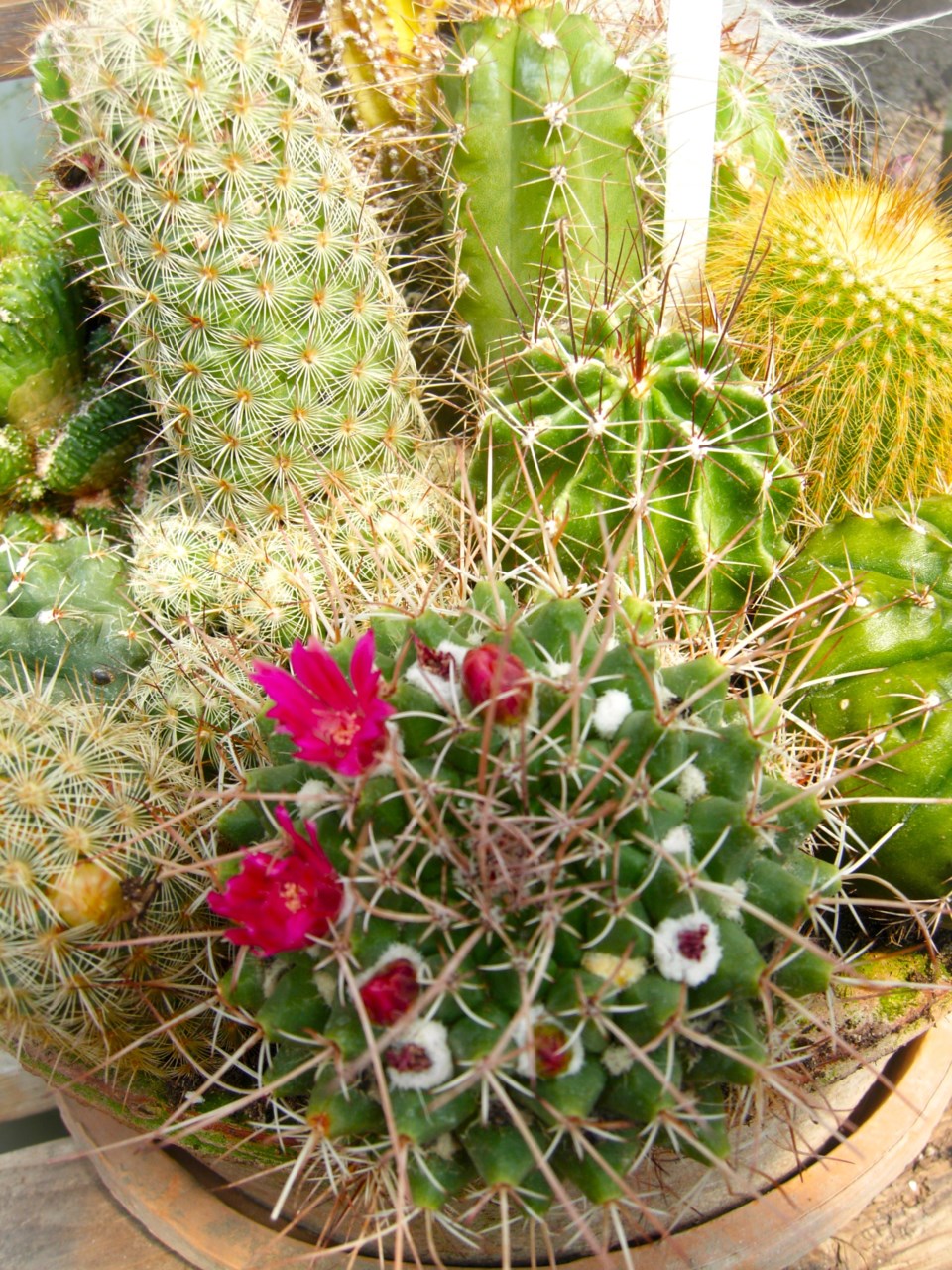Succulents are plants that have the capacity to store water when it is available and then utilize that water when it is not plentiful. They are plants that are adapted to arid climates or soil conditions that are not rich in nutrients. They may store water in their leaves, stems, roots or other underground storage organs like tuberous roots, corms, bulbs or rhizomes. They may also adapt to severe conditions with other growth adaptations.
Succulent plants will often appear different from other plants as they are often fleshy in appearance. The shape and arrangement of its leaves determines the type of succulent. They may have a waxy, hairy or shiny outer surface that helps them reduce water loss. Their root systems are often very close to the surface of the ground allowing them to capitalize on small water sources such as dew. They are usually compact, cushion-like, columnar or spherical and will often have ribs that enable rapid increases in volume during wet seasons. If it is a cactus, the type of cactus the plant is will be determined by its stems. Cactus stems are typically fluted, ribbed or pleated and all cacti will form a modified nodule called an areole, but succulents will not form areoles.
Interestingly enough, the best known succulents are cacti. All cacti are succulents, but not all succulents are cacti. All cacti have spines or modified leaf structures but only some succulents will have spines. The distinguishing factor between succulents with spines and cacti with spines is the grouping of those spines. As mentioned above, modified buds or areoles identify cacti as a family that is distinct from other succulents. These areoles appear to be small bumps out of which the spines will grow. The areoles are actually specialized branches of the cacti. Originally they were aborted branch buds with spines that had evolved as vestigial leaves. It is from these areoles that branches and even flowers will grow. The saguaro cactus will grow entire new branches from areoles. The areoles are arranged in regular patterns that are specific to the species. The barrel cactus will have areoles arranged along the ribs of the cactus, while the Christmas cactus only has areoles grouped on the tips and sides of the stems.

If you are not yet confused – read on! There is another plant family that is very large and diverse and is often confused with cacti. The Euphorbia family also has spines, very few leaves and green stems. However, they do not have areoles. A very common euphorbia that is often thought of as a cactus is the Crown of Thorns (Euphorbia milii). If you are trying to figure out if a plant is a cacti or a euphorbia, there is another way to easily determine the difference. Simply make a small cut in an inconspicuous spot: if the sap is milky white and very sticky, it is most likely a euphorbia. Cacti sap is clear and watery.
Whether you are growing a cactus or other succulent in your home, the care is often fairly similar. Most will appreciate a warm, dry and sunny area in the home. Watering is the most critical factor as you do not water them as you would your other houseplants. During the spring and summer months, water enough that the surface does not completely dry out. During the winter months, water very sparingly as the plant will be almost dormant. They are very susceptible to root and stem rot and over-watering will easily cause this problem. Repot when they are in active growth to ensure they can adapt to their new environment.
Hanbidge is the Lead Horticulturist with Orchid Horticulture. Find us at www.orchidhort.com; by email at [email protected]; on Facebook @orchidhort and on instagram at #orchidhort. Tune into GROW Live on our Facebook page or check out the Youtube channel GROW.
The views and opinions expressed in this article are those of the author, and do not necessarily reflect the position of this publication.




